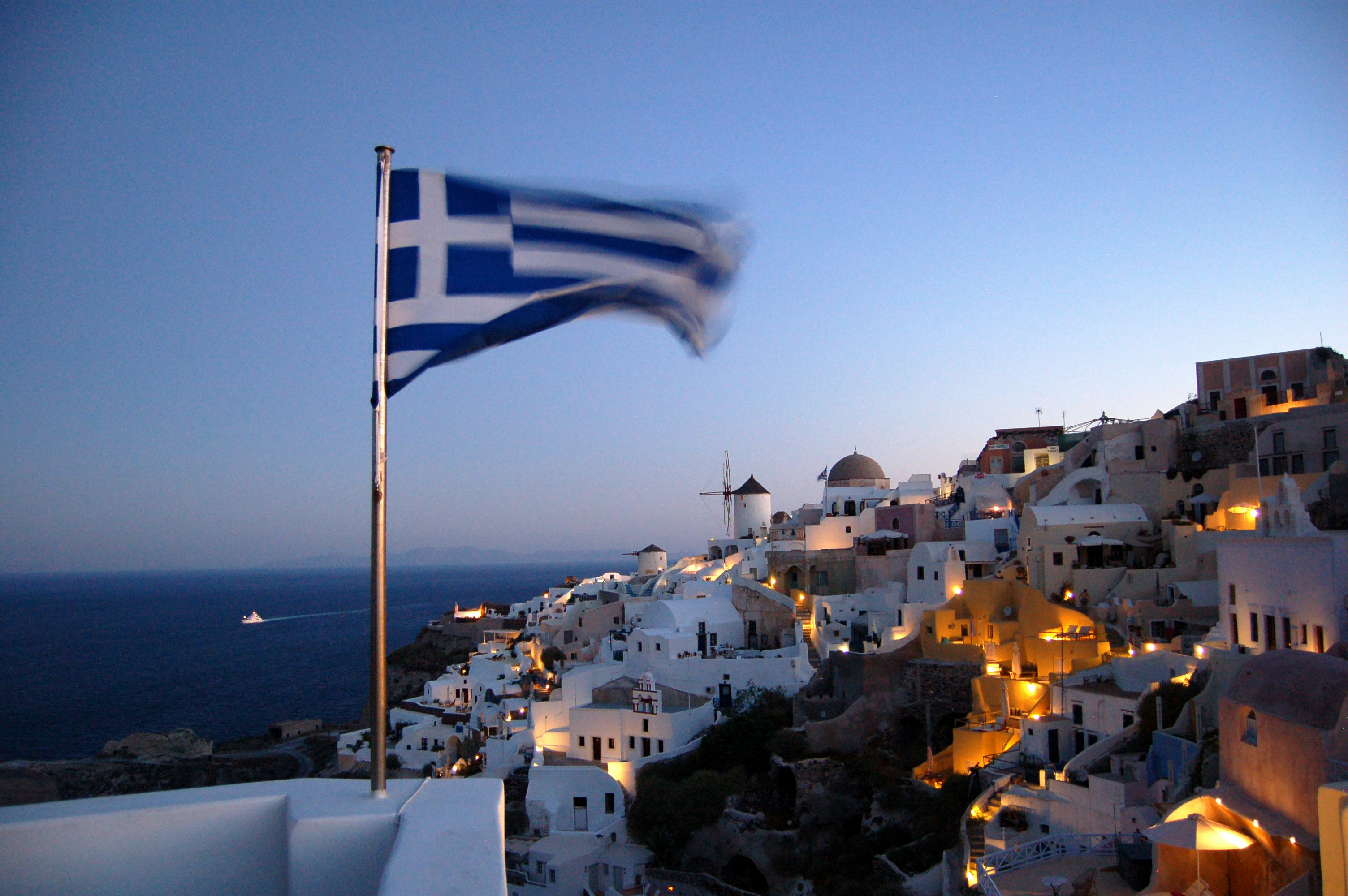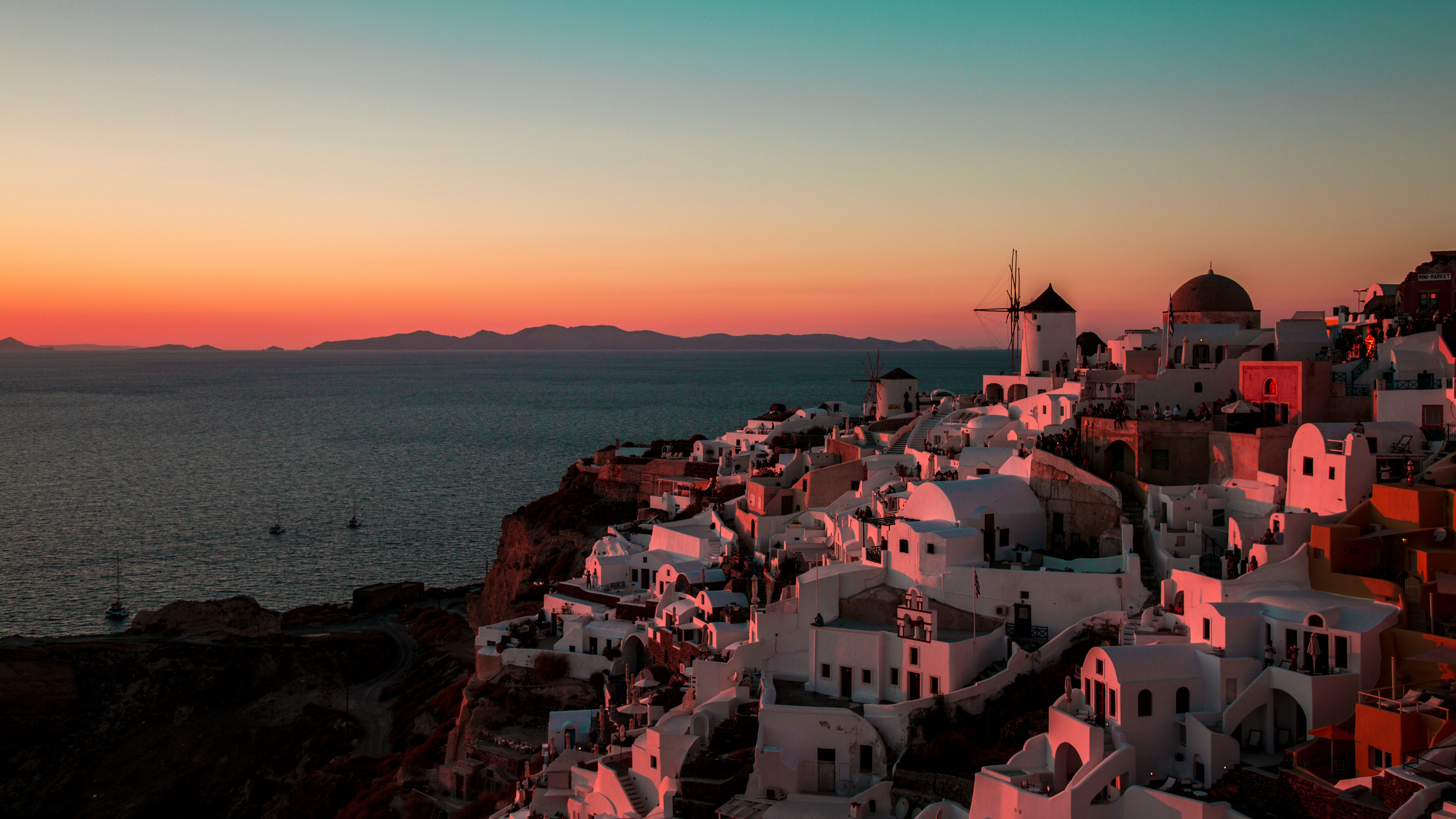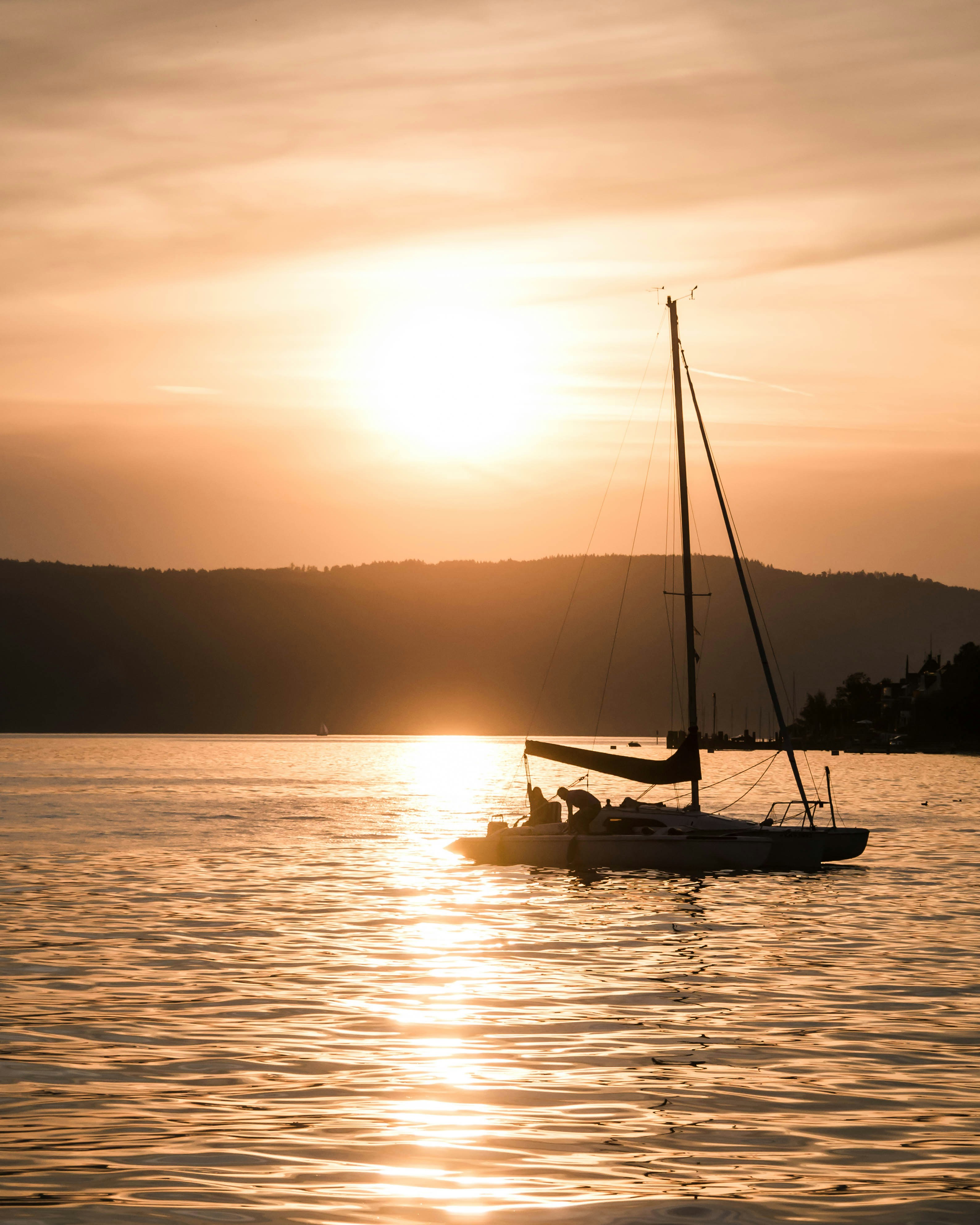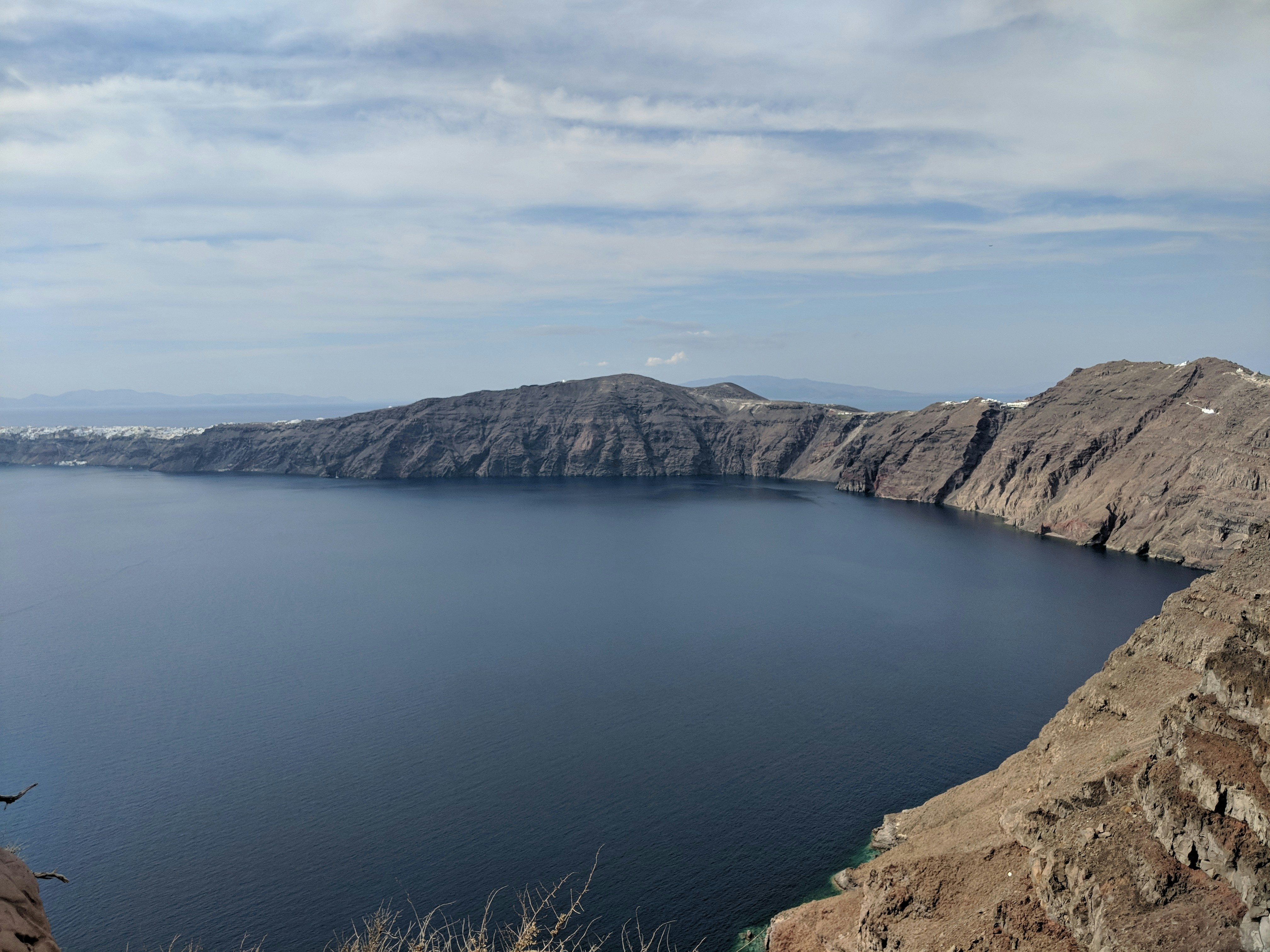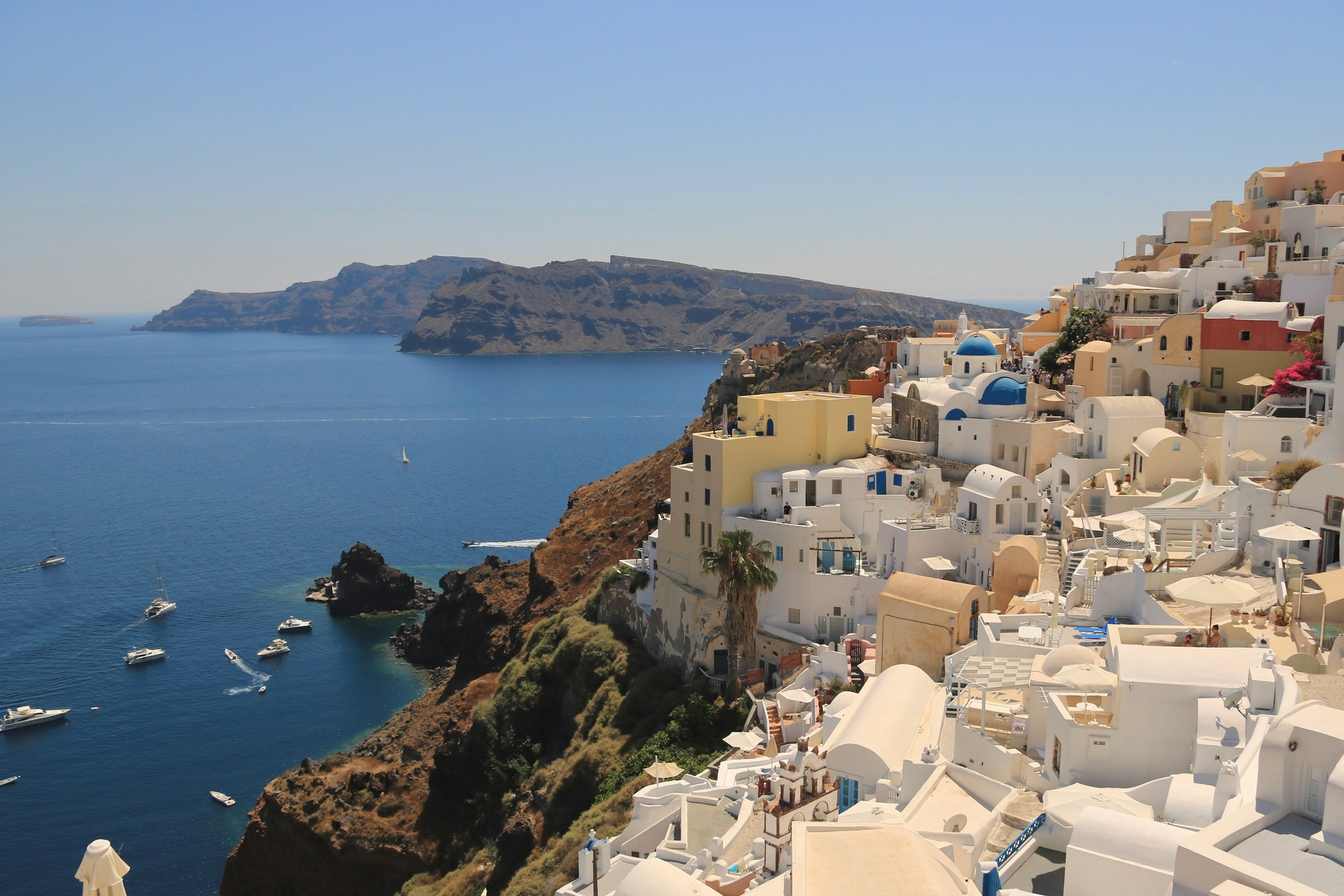
Santorini, Greece
Santorini, once known as Thira in ancient times, is a jewel in the Aegean Sea, captivating visitors with its dramatic beauty and rich history. This crescent-shaped island was born from one of the most powerful volcanic eruptions in recorded history, which created the breathtaking caldera that defines its landscape today. With its iconic whitewashed buildings cascading down the volcanic cliffs and sunsets that bathe the sky in fiery hues, Santorini is a dream destination that blends natural splendor with luxurious comfort.
The island's striking volcanic terrain offers panoramic views, unforgettable sunsets, and unique beaches with black sand framed by red volcanic cliffs. Whether you’re wandering through ancient ruins, savoring exquisite wines, or soaking in the awe-inspiring scenery, a visit to Santorini promises an unforgettable experience that will leave a lasting impression on every traveler.
What is Santorini best known for?
Santorini's fame stems from its unique volcanic landscape, creating a natural wonder that draws visitors from around the globe. The island is renowned for:
Its magnificent caldera views, offering some of the most dramatic seascapes in the world
Spectacular sunsets that transform the sky into a canvas of orange, pink, and purple
Distinctive architecture featuring white-washed, cave-style buildings and the blue domed churches
Black, red, and white volcanic beaches that showcase its geological heritage
Award-winning wines grown in volcanic soil
Rich archaeological history, including the preserved ancient city of Akrotiri
When should I go to Santorini?
The tourist season in Santorini runs from April to October, with peak travel in July and August, when hotels, restaurants, and services are at full capacity.
For a more relaxed experience, visit during the shoulder seasons of April-May or September-October, when the weather is pleasant, and the main towns are less crowded. Even a winter trip to Santorini can be rewarding, as prices drop, though some services and restaurants may be closed. The season officially begins around Greek Orthodox Easter (mid-April).
How much time should I spend in Santorini?
A trip to Santorini requires at least three days to experience the highlights: the caldera views, a Nea Kameni boat tour, beach visits, and a taste of local Greek cuisine. The Fira to Oia hike, though rewarding, can be challenging due to limited shade. If budget allows, a longer stay offers the chance to explore Thirasia Island, historical sites, and many tours of volcano landscapes and wineries.
Curated local activities
Explore the Beaches
Santorini’s beaches are unlike any other in Greece, thanks to volcanic activity. Top picks include:
Red Beach – famous for its unique red cliffs and pebbles
Black sand beaches like Perissa and Kamari
White Beach – accessible by boat, featuring bright white cliffs
Where to stay in Santorini
While Santorini offers various accommodation options, Fira stands out as the ideal location for discerning travelers. As the island's capital, Fira provides the perfect blend of convenience, luxury, and stunning caldera views. Here, Opera Mansion Santorini offers an exclusive haven of sophistication, perfectly positioned to enjoy both sunset views and easy access to the island's attractions.
Fira's central location makes it the perfect base for exploring the island, with easy connections to all major sites and beaches. The town buzzes with high-end restaurants, shopping, and nightlife, while maintaining the charm of traditional Cycladic architecture.
Find our Villa in the heart of Santorini
The history of Santorini
Ancient and Volcanic History
Santorini’s history dates back to prehistoric times, with the island first inhabited in the 4th millennium BC. The great volcano eruption of 1613 BC shaped the caldera, burying the Minoan city of Akrotiri under volcanic ashes.
Medieval and Ottoman Period
During medieval times, Santorini was under Byzantine rule, later controlled by the Duchy of Naxos, and then by the Ottoman Empire in 1576. Throughout its history, the locals maintained a degree of autonomy, preserving their traditions and cultural identity.
